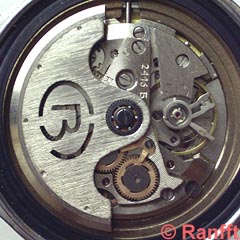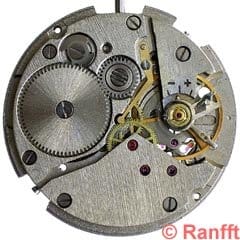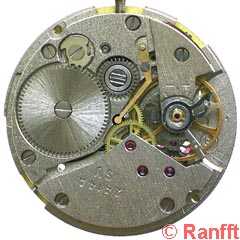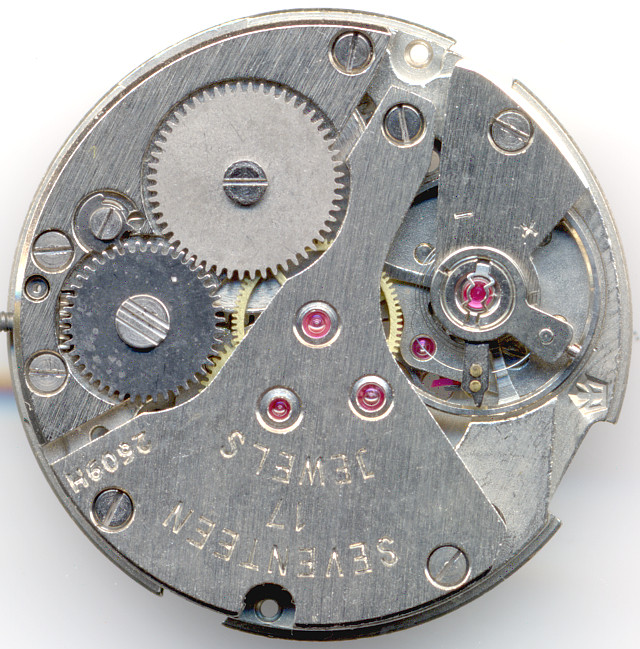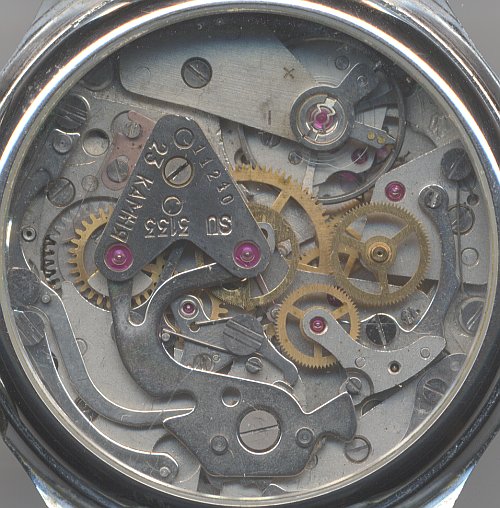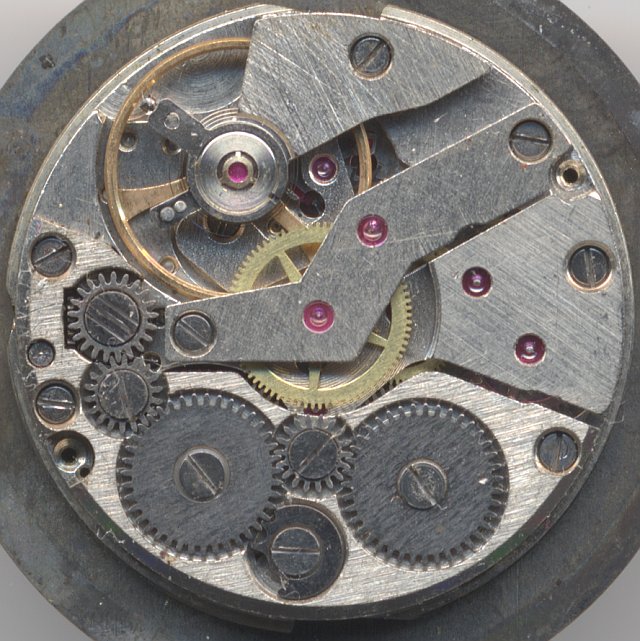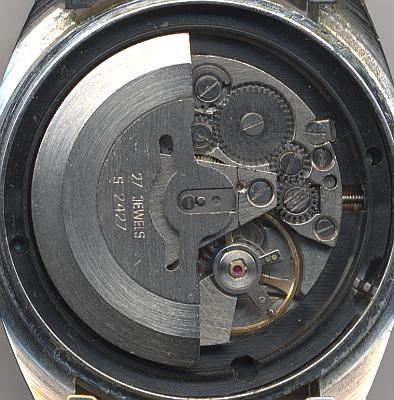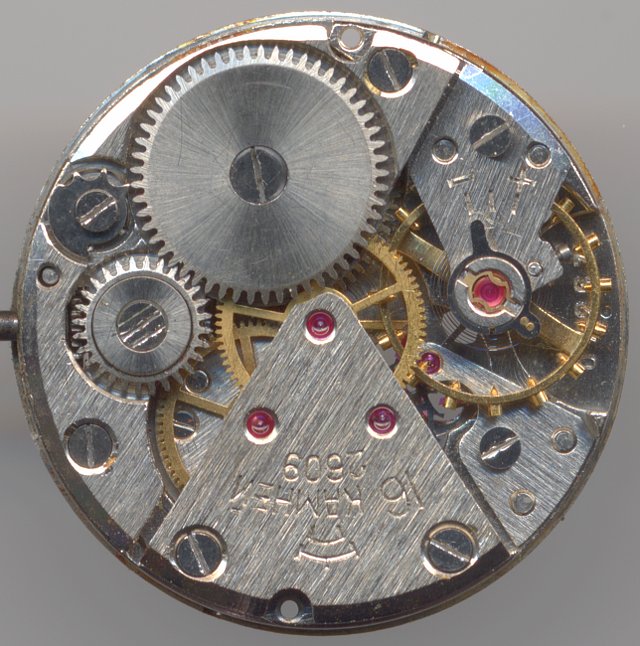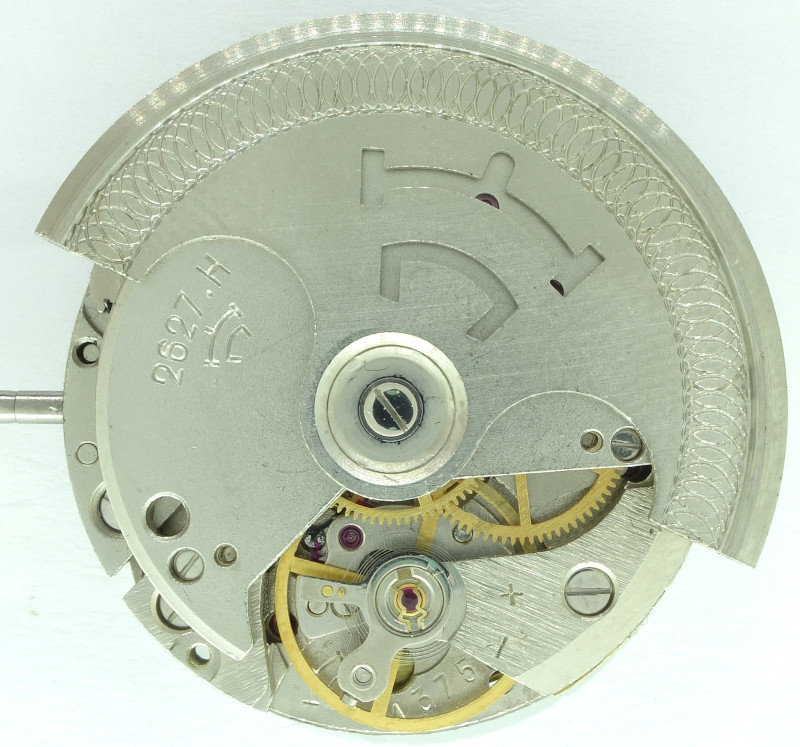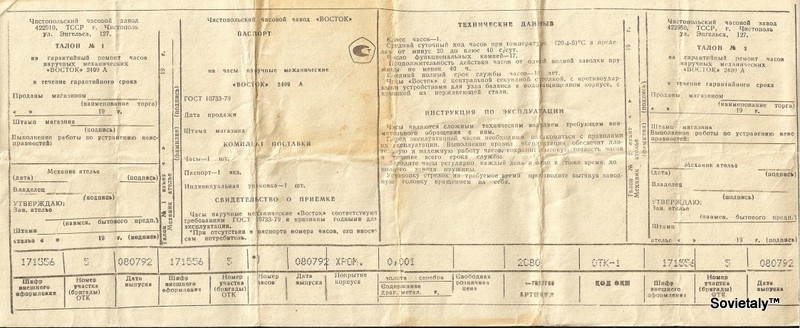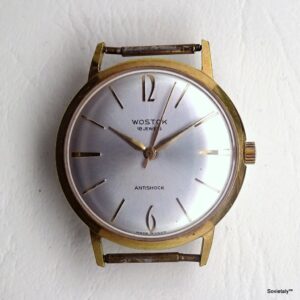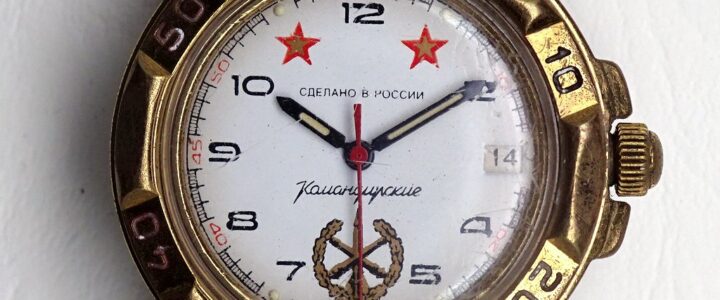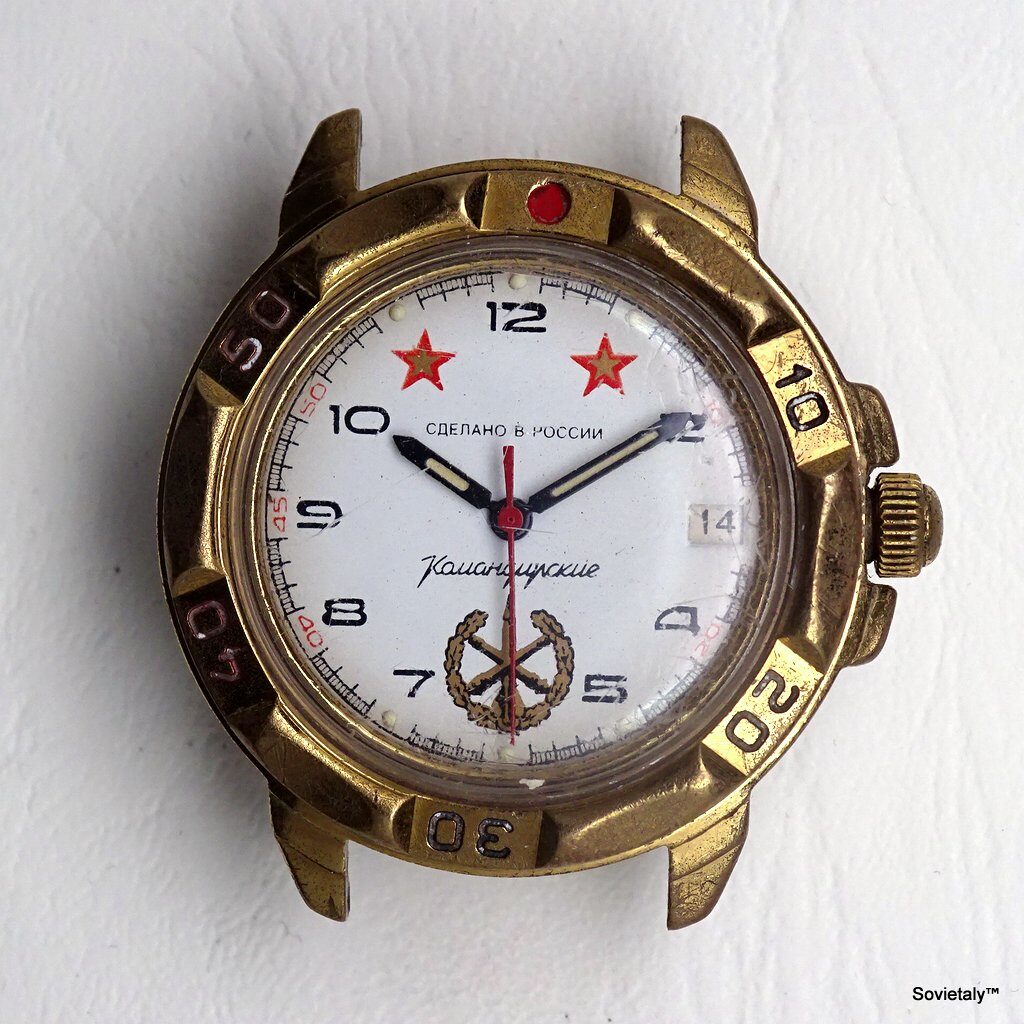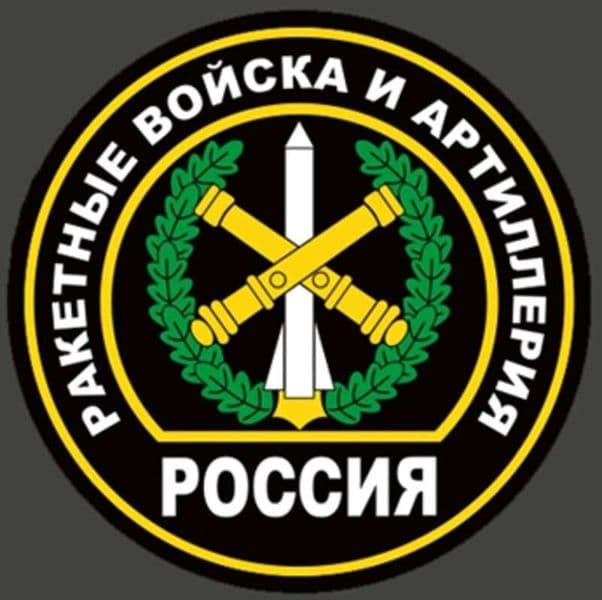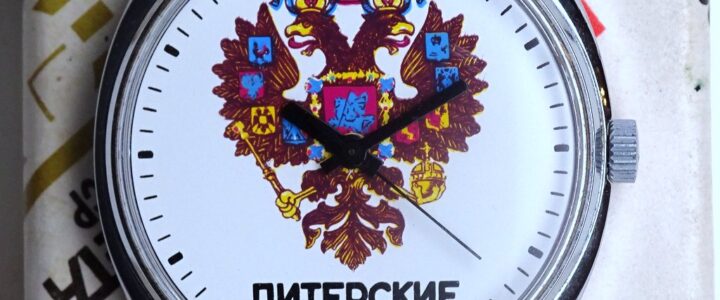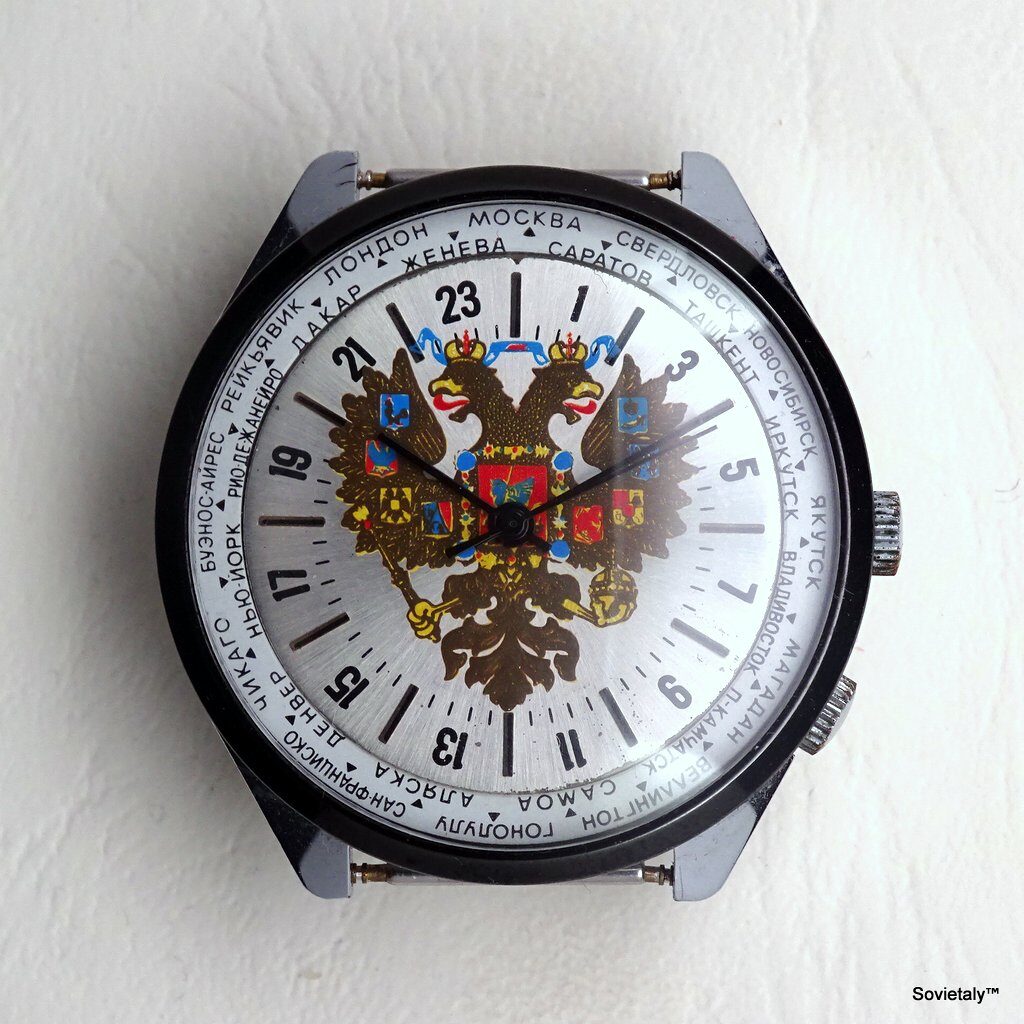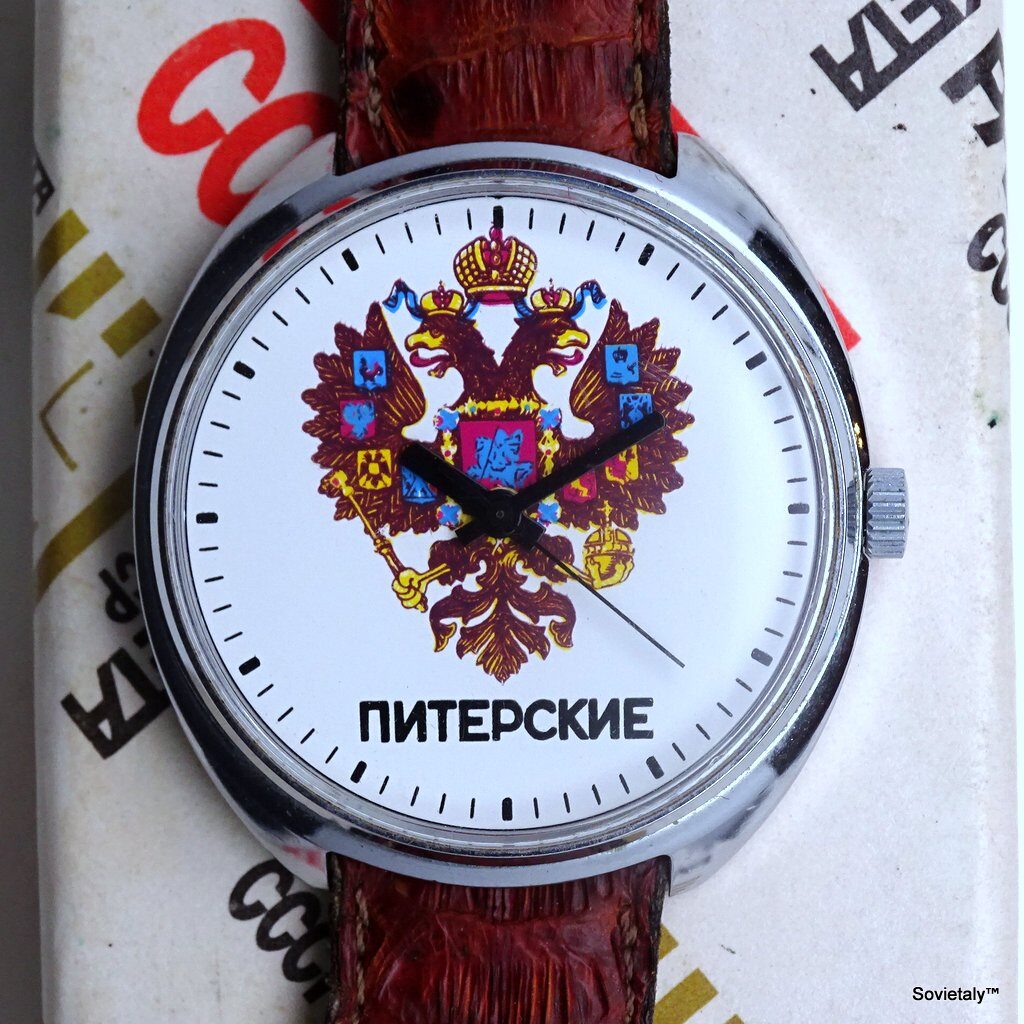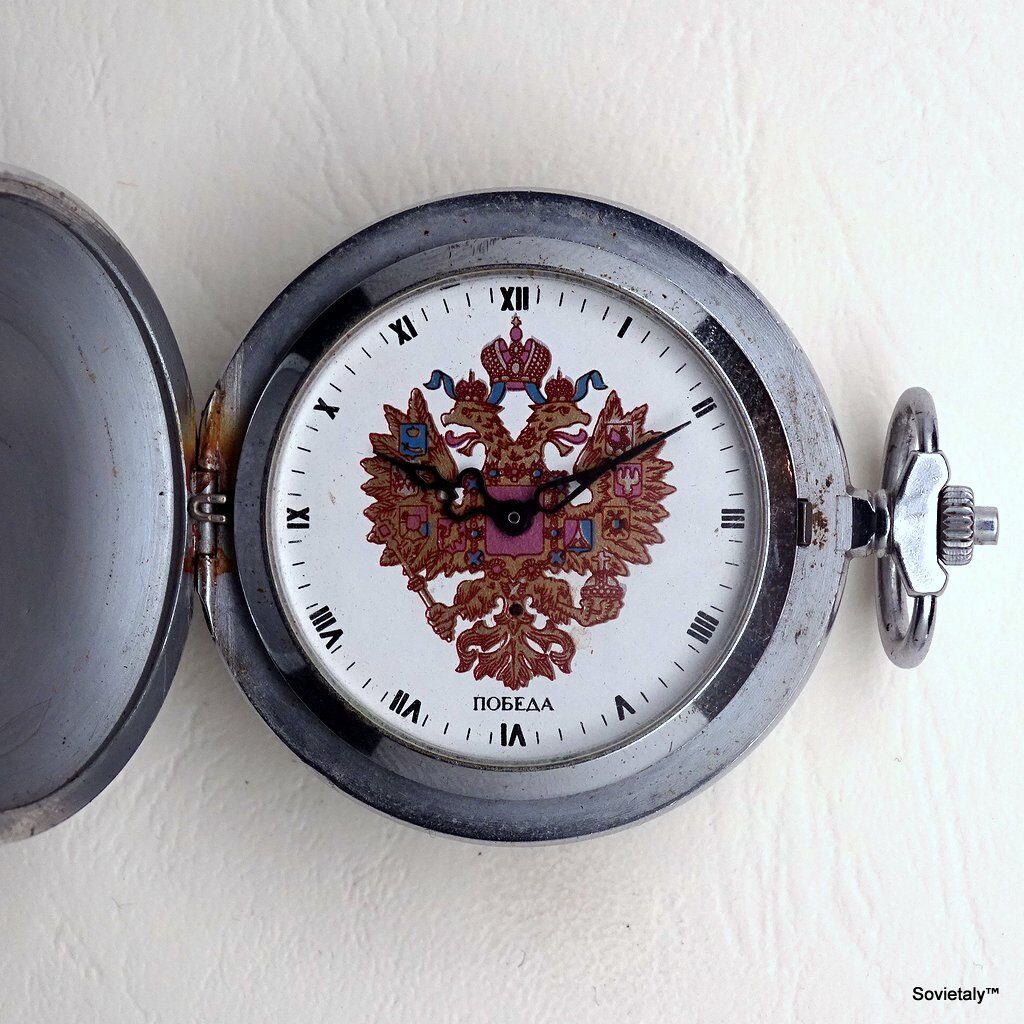| 00 | senza usato dei secondi |
| 01 | con dispositivo antiurto senza lancetta dei secondi |
| 02 | Secondi laterali |
| 03 | con dispositivo antiurto e lancetta dei secondi |
| 04 | con calendario e secondi laterali |
| 05 | con calendario, secondi laterali e ammortizzatore |
| 06 | con ora digitale |
| 07 | con un disco al posto di una lancetta dei secondi e un dispositivo antiurto |
| 08 | Secondi centrali |
| 09 | con dispositivo antiurto e lancetta centrale dei secondi |
| 10 | antimagnetico con dispositivo antiurto e lancetta centrale dei secondi |
| 11 | con quadrante illuminato, dispositivo antiurto e secondi centrali |
| 12 | con dispositivo di segnalazione, con dispositivo antiurto e lancetta centrale dei secondi |
| 13 | con calendario e secondi centrali |
| 14 | con calendario, dispositivo antiurto e lancetta centrale dei secondi |
| 15 | secondi automatici, antiurto e centrali |
| 16 | con calendario, ammortizzatore, carica automatica e lancetta centrale dei secondi |
| 17 | con cronometro a una lancetta, cronometro centrale, lancetta dei secondi laterale dell’ora corrente e lancetta dei minuti |
| 18 | con estensione del riposo di un secondo, secondi centrali e ammortizzatore |
| 19 | con calendario, dispositivo antiurto e senza lancetta dei secondi |
| 20 | carica automatica, antiurto e senza secondi |
| 21 | carica automatica, calendario, antiurto e secondi |
| 22 | con disco che sostituisce la lancetta delle ore, dispositivo antiurto e senza lancetta dei secondi |
| 23 | con lancetta dell’orologio che compie un giro ogni 24 ore, dispositivo antiurto e lancetta dei secondi centrale |
| 24 | con lancetta dell’orologio che compie un giro ogni 24 ore, un dispositivo antiurto, una lancetta centrale dei secondi e un calendario |
| 25 | con indicatore orario di zona, calendario, lancetta centrale dei secondi e ammortizzatore |
| 26 | con limite di tempo, calendario, secondi centrali, ammortizzatore e automatico |
| 27 | con doppio calendario (data, giorno della settimana), carica automatica, secondi centrali e ammortizzatore |
| 28 | con doppio calendario (data, giorno della settimana), lancetta centrale dei secondi e dispositivo antiurto |
| 29 | con doppio calendario (data, giorno della settimana), con dispositivo antiurto e senza lancetta dei secondi |
| 30 | con doppio calendario (data, giorno della settimana), con dispositivo ammortizzante, carica automatica e senza lancetta dei secondi |
| 31 | con secondi centrali, asse del bilanciere antiurto, doppio calendario con data del mese istantanea e giorno lento, carica automatica con cuscinetti a sfera e dispositivo di segnalazione |
| 36 | bilanciamento a contatto elettrico con alimentazione a batteria, lancetta centrale dei secondi, dispositivo antiurto, durata da 6 mesi a due anni |
| 37 | con regolatore a diapason, da polso, con lancetta dei secondi centrale, alimentato a batteria |
| 38 | sveglia con regolatore elettronico-meccanico, con grilletto non libero, freccia di segnalazione centrale, su pietre rubino, con campanello elettrico di piccole dimensioni, alimentato a batteria |
| 39 | sveglia con regolatore elettronico-meccanico, scappamento a perno libero, che si combina in un’unica unità estraibile, su pietre rubino, con freccia di segnalazione centrale, campanello elettrico di piccole dimensioni e alimentazione a batteria |
| 40 | sveglia con regolatore a diapason e alimentazione DC, tempo di funzionamento di almeno 12 mesi |
| 41 | sveglia con regolatore a diapason su transistor, con calendario, alimentazione da sorgente DC, tempo di funzionamento di almeno 13 mesi |
| 42 | sveglia con regolatore a diapason e alimentazione da fonte DC, il tempo di funzionamento è di almeno 12 mesi, il segnale è azionato da un motore a molla |
| 43 | sveglia con regolatore elettronico-meccanico, scappamento a perno libero, che si abbina in un’unica unità estraibile, su pietre di rubino, con freccia di segnalazione centrale, campanello elettrico di piccole dimensioni, con meccanismo di accensione di una campana elettrica di breve durata non superiore a 40 secondi e alimentato da una batteria |
| 45 | polsini elettronico-meccanici, con dispositivo antiurto e lancetta dei secondi centrale, alimentati a batteria |
| 71 | sveglia su pietre di rubino, bilanciere con scappamento, ago di segnalazione centrale, dispositivo di segnalazione acustica, con una molla di colpo e colpo nei tamburi. La frequenza dell’impianto è di un giorno |
| 72 | su pietre di rubino, pietre di equilibrio con scappamento, lancetta di segnale centrale, dispositivo di segnalazione sonora, con colpo e molla di percussione nei tamburi. La frequenza di avvolgimento è di un giorno, con una melodia musicale preliminare |
| 73 | Sveglia su quattro pietre di rubino, bilanciere con scappamento a perno libero, ago di segnalazione centrale e dispositivo di segnalazione acustica. Molle senza tamburi. La frequenza dell’impianto è di un giorno |
| 74 | Cfr. punto 73, con calendario |
| 75 | V. 73, 74, con un segnale preliminare |
| 76 | sveglia su pietre di rubino, bilanciere con scappamento, ago di segnalazione centrale, dispositivo di segnalazione acustica, con molla per far scorrere e percuotere i tamburi. La frequenza di avvolgimento è di una settimana, la corsa e il segnale sono avvolti separatamente |
| 77 | sveglia su pietre di rubino, bilanciere con scappamento, ago di segnalazione centrale, dispositivo di segnalazione acustica, con una molla di colpo e di colpo nei tamburi. La frequenza di avvolgimento è di una settimana, la corsa e il segnale sono avvolti separatamente |
| 78 | sveglia su pietre rubino, bilanciere con scappamento, ago di segnalazione centrale, dispositivo musicale e segnale luminoso. Molla di traslazione nel tamburo, frequenza di carica – un giorno |
| 79 | sveglia su pietre rubino, bilanciere con scappamento, ago di segnalazione centrale, segnalatore acustico. Molla di corsa e percussione in un unico tamburo |
| 80 | sveglia su pietre di rubino, bilanciere con scappamento a perno libero, ago di segnalazione centrale, segnalatore acustico. Molla di corsa e percussione in un unico tamburo |
| 100 | pendolo a parete con motore kettlebell, scappamento a gancio inverso, senza dispositivi aggiuntivi, frequenza di carica – un giorno |
| 101 | pendolo a parete con motore kettlebell, grilletto alternativo, con trasmissione di movimenti oscillatori al quadrante, frequenza di carica – un giorno |
| 102 | pendolo a parete con motore kettlebell, scappamento a gancio inverso, con calendario settimanale, frequenza di carica – un giorno |
| 103 | pendolo a parete con motore kettlebell, scappamento a gancio inverso, con un intervallo di suoneria di un’ora e mezz’ora, la frequenza di carica è di un giorno |
| 104 | pendolo a parete con motore kettlebell, scappamento a gancio inverso, con suoneria di un’ora e mezza ora e cucù, la frequenza di carica è di un giorno |
| 105 | su quattro pietre di rubino, pietre del bilanciere con scappamento a perno libero, senza dispositivi aggiuntivi. Molla senza tamburo, frequenza di carica – un giorno |
| 106 | su quattro pietre di rubino, bilancieri con scappamento a perno libero, con lancetta dei secondi laterale e freno del bilanciere. Molla senza tamburo, frequenza di carica – un giorno |
| 107 | su quattro pietre di rubino, pietre di bilanciere con scappamento a perno libero, con un dispositivo di segnalazione secondo un programma dato. Frequenza di avvolgimento – per un dato programma entro un’ora |
| 108 | su quattro pietre di rubino, pietre di bilanciere con scappamento a perno libero, con un dispositivo di segnalazione secondo un programma dato. Periodicità di avvolgimento – per un dato programma in un giorno |
| 109 | pendolo con motore a kettlebell, scappamento a gancio rovescio, con cuculo, segnale ogni ora e mezz’ora. La frequenza dell’impianto è di un giorno |
| 121 | Pendolo, grilletto alternativo, senza dispositivi aggiuntivi. La molla è senza botte, la frequenza di carica è di una settimana |
| 122 | Su pietre rubino, pietre di equilibrio con scappamento ad ancora attaccato. La molla è senza tamburo, senza dispositivi aggiuntivi. La frequenza dell’impianto è di una settimana |
| 123 | Su pietre di rubino, bilanciere con scappamento attaccato, con lancetta dei secondi centrale, senza interruzione, molla senza bariletto. La frequenza dell’impianto è di una settimana |
| 124 | Sulle pietre di rubino, le pietre del bilanciere con uno scappamento ad ancora attaccato, con un rintocco ogni ora. Molla senza bariletto, intervallo di carica di una settimana |
| 125 | Vedi 124, con un rintocco, frequenza ogni ora e mezz’ora |
| 126 | su pietre di rubino, con scappamento annesso, con un triplo calendario (data, giorno della settimana, mese). La molla è senza barile, la frequenza di avvolgimento è di una settimana. |
| 127 | Sulle pietre di rubino, le pietre del bilanciere con scappamento ad ancora, senza dispositivi supplementari. Molla nel tamburo, frequenza di carica una settimana |
| 128 | Su pietre di rubino, pietre del bilanciere con scappamento, lancetta dei secondi centrale, senza combattimento. Molla nel tamburo, frequenza di carica una settimana |
| 129 | Sulle pietre di rubino, bilanciere con scappamento annesso, senza lancetta dei secondi, con un rintocco ogni ora e mezz’ora. Molla nel tamburo, frequenza di carica una settimana |
| 130 | pendolo con motore a kettlebell, scappamento a gancio alternativo, con rintocco ogni ora e un quarto d’ora. La frequenza dell’impianto è di una settimana |
| 131 | pendolo con motore a molla, scappamento a gancio rovescio, con rintocco ogni ora e un quarto d’ora. La frequenza dell’impianto è di una settimana |
| 132 | Sulle pietre di rubino, le pietre del bilanciere con scappamento, con lancetta dei secondi centrale, con un calendario di date, giorni della settimana, mese e fase lunare. Molla nel tamburo, frequenza di carica una settimana |
| 133 | V. 132, senza la seconda mano |
| 134 | Sulle pietre di rubino, le pietre di equilibrio con uno scappamento ad ancora, senza combattimento, con un calendario. Molla nel tamburo, frequenza di carica una settimana |
| 135 | pendolo con scappamento, senza dispositivi aggiuntivi. Primavera nel tamburo, frequenza di carica – una settimana |
| 136 | pendolo con motore a molla, scappamento a gancio rovescio, con rintocco ogni ora e mezz’ora. Molle nei tamburi, frequenza di carica una settimana |
| 137 | Sulle pietre di rubino, le pietre di equilibrio con scappamento ad ancora, con un rintocco ogni ora e un quarto d’ora. Molle nei tamburi, frequenza di carica una settimana |
| 151 | pendolo con scappamento a gancio alternativo, con rintocco ogni ora e mezz’ora. Molle nei tamburi, frequenza di avvolgimento – due settimane. |
| 152 | pendolo con scappamento a gancio alternativo, con rintocco ogni ora e un quarto d’ora. Molle nei tamburi, frequenza di avvolgimento – due settimane. |
| 153 | è un pendolo con un motore kettlebell, un grilletto alternativo, con un campanello ogni ora e un quarto d’ora, la frequenza di avvolgimento è di due settimane. |
| 154 | Sulle pietre di rubino, pietre del bilanciere con uno scappamento ad ancora attaccato, senza dispositivi aggiuntivi. Molla senza tamburo, frequenza di carica – due settimane |
| 155 | Sulle pietre di rubino, pietre del bilanciere con scappamento ad ancora attaccato, senza dispositivi supplementari. Molla nel tamburo, frequenza di carica – due settimane |
| 156 | Sulle pietre di rubino, le pietre del bilanciere con scappamento attaccato, con una lancetta dei secondi laterale, senza combattimento. Molla nel tamburo, frequenza di carica – due settimane |
| 157 | Sulle pietre di rubino, le pietre del bilanciere con scappamento attaccato, con una lancetta dei secondi laterale, con un calendario dei giorni della settimana, senza combattimento. Molla nel tamburo, frequenza di carica – due settimane |
| 158 | Sulle pietre di rubino, le pietre del bilanciere con scappamento annesso, senza lancetta dei secondi, con un rintocco ogni ora e mezz’ora. Colpo e colpi di molle nei tamburi, frequenza di carica – due settimane |
| 159 | Sulle pietre di rubino, pietre del bilanciere con scappamento attaccato, con lancetta dei secondi centrale, senza combattimento. Molla nel tamburo, frequenza di carica – due settimane |
| 160 | Sulle pietre di rubino, bilanciere con scappamento annesso, senza lancetta dei secondi, con un rintocco ogni ora e un quarto d’ora. Colpo e colpi di molle nei tamburi, frequenza di carica – due settimane |
| 161 | Sulle pietre rubino, le pietre del bilanciere con scappamento attaccato, con un disco invece di una lancetta dei secondi. Molla nel tamburo, frequenza di carica – due settimane |
| 162 | Su pietre di rubino, pietre di equilibrio con scappamento attaccato, con una melodia. Molle nei tamburi, frequenza di carica – due settimane |
| 163 | Pendolo con scappamento a strappo e a gancio, con melodia. Molle nei tamburi, frequenza di carica – due settimane |
| 164 | Sulle pietre di rubino, le pietre del bilanciere con uno scappamento attaccato, senza lancetta dei secondi, con un calendario dei giorni della settimana, senza combattimento. Molla nel tamburo, frequenza di carica – due settimane |
| 165 | Su pietre di rubino, pietre del bilanciere con scappamento annesso, senza lancetta dei secondi, con un triplo calendario (data, giorno della settimana, mese), senza combattimento. Molla nel tamburo, frequenza di carica – due settimane |
| 181 | scappamento elettromeccanico, bilanciere, lancetta dei secondi centrale, a batteria |
| 182 | torri del bilanciere con scappamento annesso, lancetta centrale dei secondi e carica di rete. Molla nel tamburo |
| 183 | su pietre di rubino, bilanciere con scappamento annesso, avvolgimento da un motore elettrico in miniatura, alimentato da una batteria da 4 V, con un calendario. La durata del lavoro è di almeno quattro mesi. Molla nel tamburo |
| 184 | v. 183, senza calendario |
| 185 | con regolatore elettronico-meccanico su transistor, con magnete sul bilanciere, bilancia con asse posto verticalmente, su quattro pietre, alimentato da una batteria. Almeno un anno di durata della batteria prima della sostituzione della batteria |
| 186 | su pietre rubino, elettrico, con regolatore elettronico-meccanico e scappamento a perno libero, combinato in un’unica unità estraibile, alimentata a batteria. La durata del lavoro è di almeno un anno |
| 189 | su pietre di rubino, con regolatore elettronico-meccanico e scappamento a perno libero, combinati in un’unica unità estraibile, alimentata da una batteria. Con un calendario istantaneo (data e giorno della settimana). La durata del lavoro è di almeno un anno |
| 190 | su pietre di rubino, con regolatore elettronico-meccanico e scappamento a perno libero, combinati in un’unica unità estraibile, alimentata da una batteria. Con una lotta ogni ora, mezz’ora, un quarto d’ora. La durata del lavoro è di almeno un anno |
| 191 | su pietre di rubino, con regolatore elettronico-meccanico e scappamento a perno libero, combinati in un’unica unità estraibile, alimentata a batteria. Con una melodia musicale suonata ogni ora. Almeno un anno di autonomia prima di sostituire la batteria |
| 192 | su pietre di rubino, con regolatore elettronico-meccanico e scappamento a perno libero, combinati in un’unica unità rimovibile, alimentata da una batteria al nichel-cadmio ricaricata da una batteria solare |
